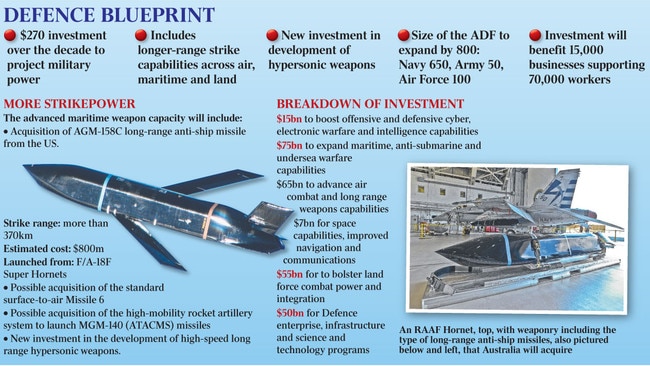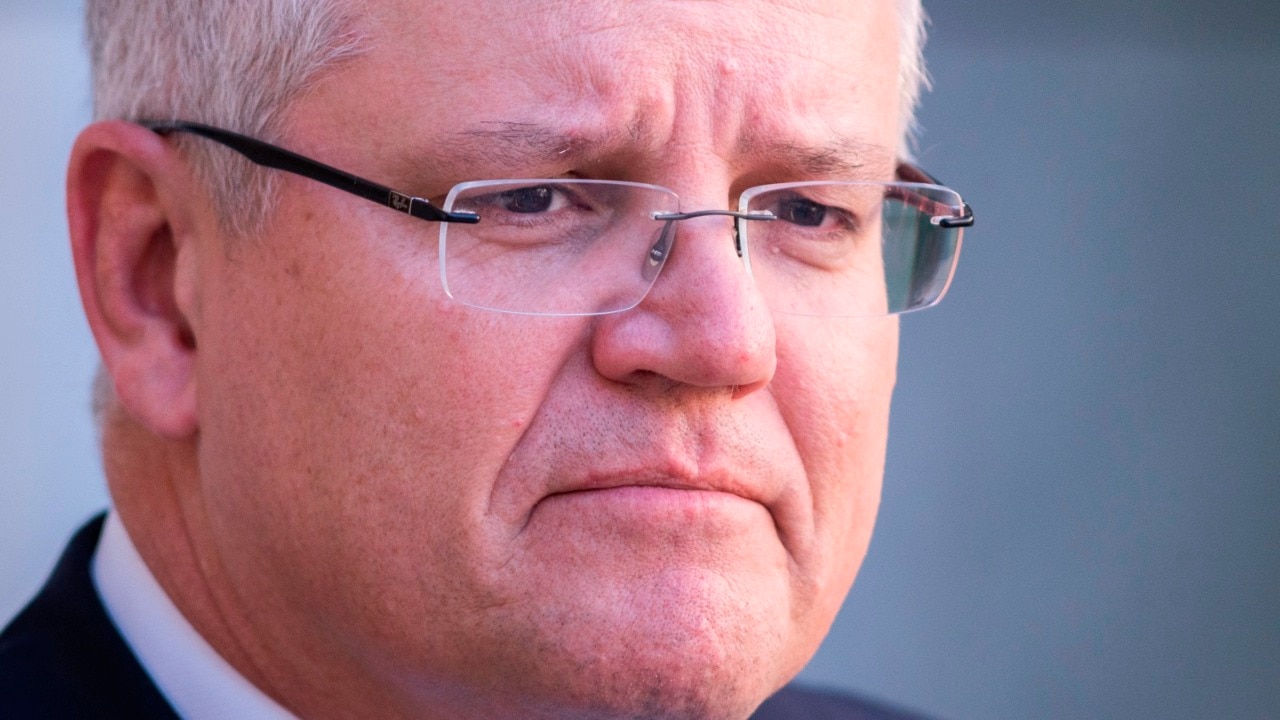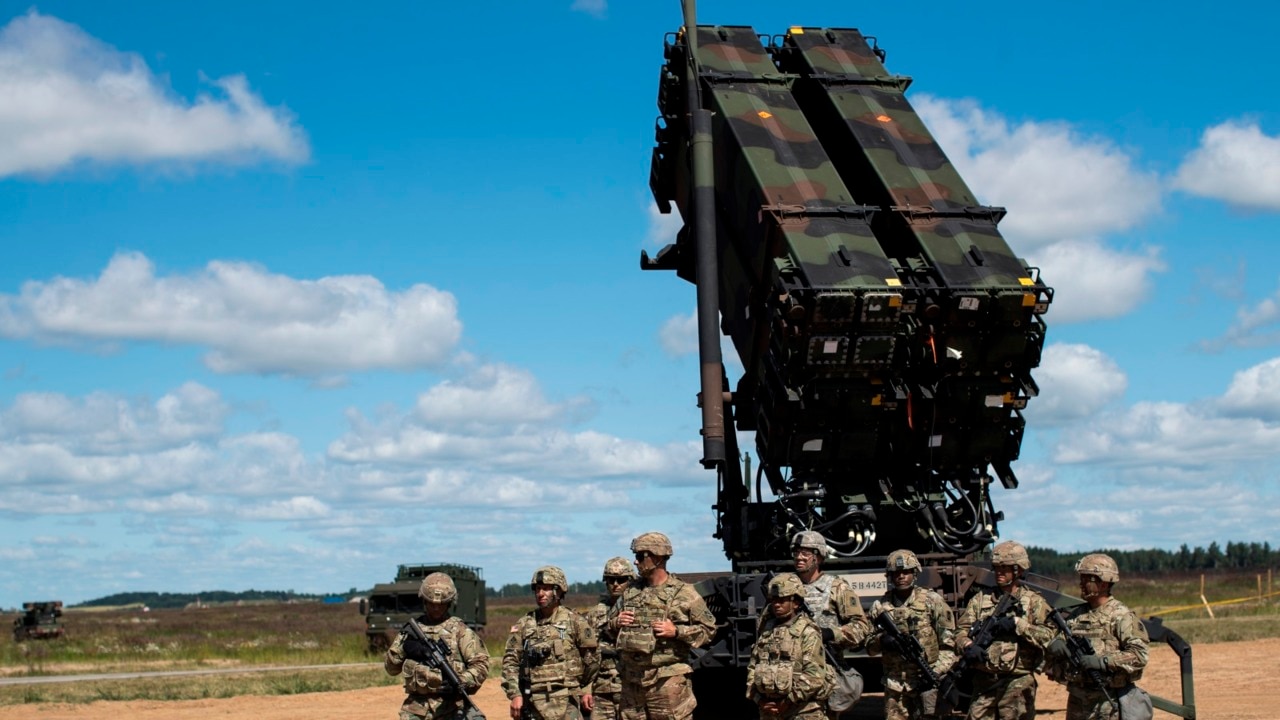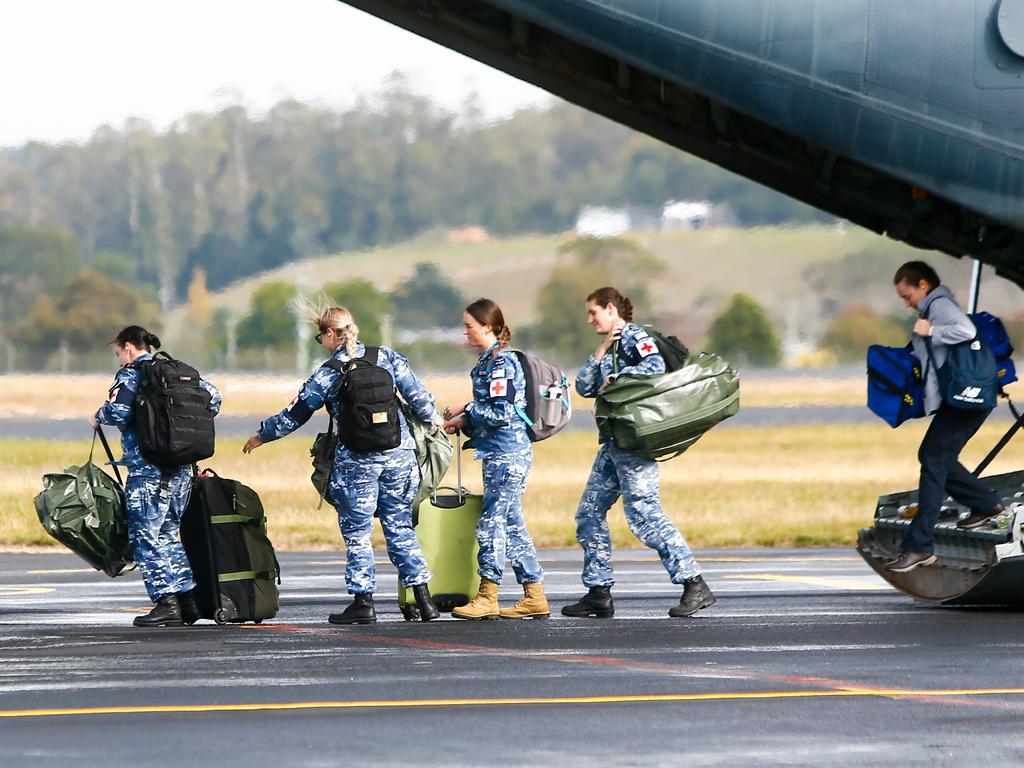‘Lethal’ capability in PM‘s $270bn defence plan
Scott Morrison announces a 10-year defence plan that includes an anti-ballistic missile defence shield.

Australia will roll out an anti-ballistic missile defence shield for deployed forces for the first time, as well as land, sea and air-based long-range and hypersonic strike missiles, to project military power to the region and defend against potential “adversaries”.
In the most significant shift in the nation’s military posture in decades, Scott Morrison on Wednesday announced a $270bn 10-year defence plan including “lethal” naval and air warfare capability as well as the first land-based long-range missile defence systems.
It will include the development with the US of a missile defence shield against ballistic missile attack as well as potential long-range missile technology of up to several thousand kilometres to protect shipping lanes across the region.
Anti-submarine warfare, space-based intelligence and battlefield capability and underwater surveillance technology will also be developed.
The plan calls for advanced air-warfare capacity, combat drones, long-range naval missile strike ability, and “sovereign”-owned military satellites with ground-based signals intelligence facilities.
The dramatic escalation in Australia’s missile defence and deterrence capability will take annual defence spending beyond the 2 per cent of GDP committed to in 2013, and comes as the Prime Minister warns of the deterioration in the strategic situation in the Indo-Pacific since the 2016 defence white paper.
The move will be seen as a direct response to the increasing Chinese militarisation north of Australia and the accelerated strategic and economic uncertainty fuelled by the coronavirus crisis.
“What I know is that the world has changed,” Mr Morrison told The Australian. “The world hasn’t known a time of economic and strategic uncertainty like this since the 30s and 40s. This has required us to sharpen our focus on our region and enhance our capability. We need to hold our potential adversaries to a greater distance. Part of our repositioning is to hold them further away and to work with multiple partners to achieve our goals of regional stability, peace and security.”
The new Force Structure Plan and strategic defence policy signals a major shift in Australia’s global role, place a greater focus on the immediate region and put adversaries on notice that Australia will respond with force if needed.

In a major defence and national security statement to the Australian Defence Force Academy, Mr Morrison argued that, while Australia combats the pandemic, it must also “prepare for a post-COVID world that is poorer, more dangerous and more disorderly.”
“Now, we must face the reality that we have moved into a new and less benign strategic era, one in which the institutions and patterns of co-operation that have benefited our prosperity and security for decades are under increasing strain. The Indo-Pacific is the epicentre of rising strategic competition. Tensions over territorial claims are rising … as we have seen recently on the disputed border between India and China, in the South China Sea, and in the East China Sea.
“The risk of miscalculation — and even conflict — is heightening. Regional military modernisation is occurring at an unprecedented rate. Capabilities and reach are expanding.”
The 2016 defence white paper committed $195bn in defence spending over 10 years; the new strategic plan will boost that to $270bn over the decade to 2029.
The update includes a $75bn expansion to maritime forces to “provide greater capability for anti-submarine warfare, sealift, border security, maritime patrol, aerial warfare, area denial and undersea warfare”.

Between $168bn and $183bn will be spent on upgrades to Navy and Army fleets and $5bn-$7bn on undersea surveillance systems including hi-tech sensors. Between $6.2bn and $9.3bn will also be spent on developing “high speed long range strike” and hypersonic missile technology as well as an estimated $400m-$500m in long-range maritime strike missiles, including the joint strike missile capable of low level flight up to 500km.
A further $10bn-$17bn investment will be made in fighter aircraft, signalling the possible expansion of the JSF acquisition program, and $5bn for an expanded long range air launched strike capability. A $1bn investment will be made in Operational Radar Network expansion, while $70bn will be spent on increased combat power for army and land based forces, drone vehicles and long range rocket artillery.
The specific platforms have yet to be decided and would need to go through a thorough defence procurement process
“There is a new dynamic of strategic competition, and the largely benign security environment Australia has enjoyed — roughly from the fall of the Berlin Wall to the global financial crisis — is gone,” Mr Morrison said in his address.
“Relations between China and the United States are fractious as they compete for political, economic and technological supremacy. But it’s important to acknowledge that they are not the only actors of consequence.
“It’s not just China and the United States that will determine whether our region stays on the path of free and open trade, investment and co-operation that has underpinned its prosperity and stability. Japan, India, the Republic of Korea, the countries of Southeast Asia, and the Pacific all have agency — choices to make and parts to play.”

Mr Morrison said that the objectives outlined in the 2016 defence white paper saw an equal weighting placed across three areas: Australia and its northern approaches, Southeast Asia and the Pacific, and operations in support of the rules-based global order.
In the update, the government ensures the ADF’s geographical focus will be placed on the immediate region — the area ranging from the northeast Indian Ocean, through maritime and mainland Southeast Asia to Papua New Guinea and the South West Pacific.
“We must be alert to the full range of current and future threats, including ones in which Australia’s security and sovereignty may be tested,” Mr Morrison said. “The new policy will require force structure and capability adjustments. These must be able to hold potential adversaries’ forces and infrastructure at risk from greater distance, and therefore influence their calculus of costs involved in threatening Australian interests.”
This would include developing capabilities in areas such as “longer-range strike weapons, cyber capabilities and area denial systems.” “We will also invest in more highly integrated and automated sensors and weapons, including potential development of hypersonic weapons systems,” Mr Morrison said.
The first objective he identified was to “shape Australia’s strategic environment”. “The Indo-Pacific is where we live — and we want an open, sovereign Indo-Pacific, free from coercion and hegemony,” he said.
“We want a region where all countries, large and small, can engage freely with each other, guided by international rules and norms. Where countries can pursue their own interests peacefully and without external interference.”








To join the conversation, please log in. Don't have an account? Register
Join the conversation, you are commenting as Logout